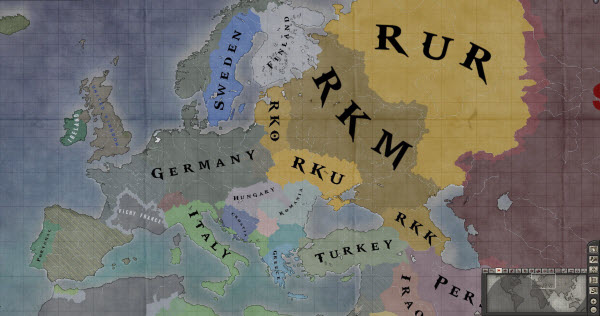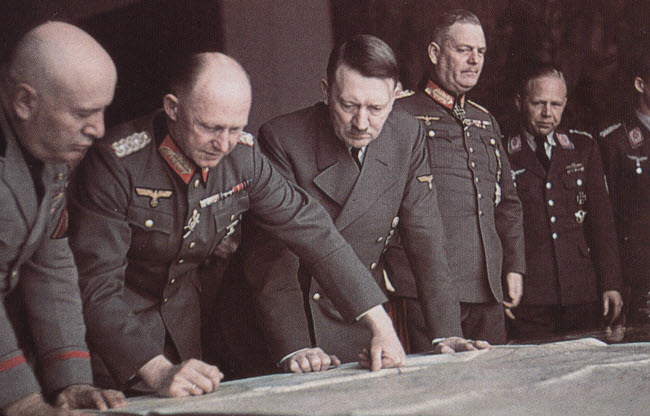Many books discuss Operation Barbarossa, which marked the beginning of a new front for the German forces during World War II, aimed at invading the Soviet Union. The fall of the Soviet Union seemed imminent until the harsh winter set in, leading to new battles between the two sides. These battles allowed the Soviets to regain their footing and inflict heavy losses on the Germans, forcing them to retreat and marking the beginning of their downfall in the war. But what if Germany had succeeded in capturing Moscow? Did Hitler have specific plans for the Soviet Union once it surrendered?
Documents revealed after the war provide insight into Hitler’s plans. Despite the extreme ideas of the Nazis regarding Western Europe, they pale in comparison to what was in store for Eastern Europe. The plans for the Eastern Front were filled with diabolical and radical ideas, including the complete partitioning of the region.
German expansionist policy was based on a concept known as “Lebensraum” or “living space,” which was central to their strategic vision for the East. This involved the elimination of Slavic peoples—such as Russians, Ukrainians, and Poles—who were considered racially inferior according to Nazi ideology. The plan was to divide the Eastern Front and remove these populations to make room for Aryan settlers. This was to be achieved either through mass deportations to Siberia beyond the Ural Mountains or by starving them to death, with their agricultural produce redirected to feed the German people.
As Operation Barbarossa commenced and the German army advanced, occupying much of Eastern Europe, the territories were placed under the administration of Alfred Rosenberg, head of the Reich Ministry for the Occupied Eastern Territories. Rosenberg was a prominent Nazi leader and a major proponent of racial superiority theories. He was also one of the architects of the so-called “positive Christianity,” a fusion of Aryan racial purity principles with certain Christian beliefs, designed to appease many German Christians when the Nazis came to power.
Hitler had plans to divide the Eastern Front into several administrative regions, each governed by a “Reichskommissar” or high commissioner. Given the vast expanse of Soviet territory, each region was to be managed separately, with significant powers granted to these commissioners who would report directly to Hitler. The proposed administrative divisions included:
- Reichskommissariat Ostland (RKO): Encompassing the Baltic states, Belarus, and parts of western Russia, this area was in operation from 1941 to 1945.
- Reichskommissariat Ukraine (RKU): Covering Ukraine (excluding eastern Galicia), Romania, Romanian-occupied territories, and the Crimea, extending later to the Volga River, this region was active from 1941 to 1944.
- Reichskommissariat Don–Volga: Although never officially established, it was intended to cover territories from the Sea of Azov to the German Volga Republic.
- Reichskommissariat Moscow (RKM): This was also never established, but it was planned to include Moscow and the rest of European Russia, excluding Karelia and the Kola Peninsula, which were allocated to Finland.
- Reichskommissariat Caucasus (RKK): This region was never fully established and was suspended between 1942 and 1943, and was intended to cover southern Russia and the Caucasus.
- Reichskommissariat Turkestan (RKT): An abandoned plan intended to cover Central Asian republics and Turkey.

Despite these detailed plans, the reality of the situation during the battles revealed that German advances achieved significant victories and captured critical economic regions of the Soviet Union, such as Ukraine. However, the war on the Eastern Front stalled at the “Battle of Moscow,” where the harsh Russian winter helped the Red Army force the Germans to retreat. The Germans were unable to launch another major offensive against the Soviet Union.
During these years, fierce battles and some of the worst atrocities in World War II were committed. The Germans captured enormous numbers of Red Army soldiers—approximately 5 million—who were not granted prisoner of war protection under the Geneva Convention. Instead, they were starved to death under a plan to exterminate the Slavic peoples. Fortunately, the Germans were defeated in these battles before they could fully implement their plans.
Documents obtained after the war revealed that Hitler’s intentions were not only to destroy the Slavic peoples but also to demolish Moscow. The city was to be the capital of the entire Eastern region, but Hitler feared that its inhabitants might rebel. As a result, he planned to completely destroy the city, raze it to the ground, and slaughter its inhabitants. Additionally, parts of the Moscow-Volga Canal were to be destroyed to flood the city, turning it into an artificial lake.
